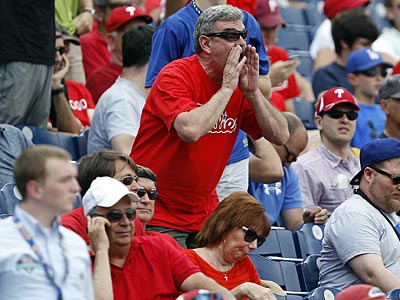Mental Toughness

Performance Plateau = Frustration
September 7, 2016
Sports Psychology Questions & Answers
September 17, 2016Mental toughness is all about playing your sport focused, confident, determined and resilient, especially under pressure.
How does that differ from what everyone one else is teaching?
First off, there are some similarities to what others are teaching but my process goes to the core where the performance destroying behavior is based. Many others sports improvement coaches, mental trainers and sports psychologists are providing the same old stuff that has been around for decades and provides limited, if any, long term results.
Why is that?
Because almost all of the other techniques never get to the root causes of these performance destroying problems. They only address the symptoms that are being produced and try to teach you how to live with them. I am about assisting you in clearing the real reasons for your problem…we go to the underlying causes.
That is how you get long lasting results!
Where cognitively approaching a situation before reacting may work well in regular day to day activities, by the time the thought process occurs, it is usually too late to do anything about it for performance. Yes, you can take nice deep breaths and give yourself some positive self talk but I’m guessing you’ve done that before or coached someone with that advice and it did little to change your bodily state.
Here's a perfect example:
I had the question asked to me the other day about how mindfulness differs from what I do. Mindfulness is similar in some ways in that the goal of mindfulness is to take the full attention of the mind to a state - The Flow State as originally described by Dr. Mihaly Chentmihalyi in the 1960’s - so that you are fully absorbed in what you are doing. This takes you into the present moment, allowing you to perform your sport without the thoughts of negativity and other interfering self-talk thus achieving optimum performance. This is great and all but is usually only achieved by the elite high performance athletes after years and years of intense practice and is often not achievable for the majority of youth, amateur and even most professional athletes who want to achieve their performance outcomes.
The difference between that and what I do is that with the typical athlete there are almost always underlying negative performance beliefs and internal thought “programs” that exist. These have been your body's automatic go to responses in those crucial situations, usually for a long time. Let me give you an example. Tony is a 13 year old baseball shortstop with a rocket for an arm. He can field the ball and throw it on a rope to wherever it needs to go. He is in a groove (flow) for most of the game but whenever the play becomes a close one at first, he fields the ball perfectly then almost always throws wide of the first baseman. He has an automatic physical response to put too much on the throw and overthrow the base when there is going to be a close play. This automatic response coupled with the negative thoughts of “I over threw it last time” create the off target throw over and over again.
So when we are talking about playing in the Flow State like he was before the close play, the goal is to perform without negative thoughts or fears interfering with your potential to perform. He was successful at doing that all game until a clutch situation arose and the body’s automatic response kicked in again, pulling him out of the Flow. If those negative beliefs, fears and emotions are allowed to remain under the surface, they will always come to the forefront in that stressful, intense or clutch situation when you need to perform at your best. Even if you are someone who truly gets into the Flow State, those automatic responses combined with underlying fears, beliefs and emotions will always pull you out of that state and consequently have a negative impact on your performance.
I teach athletes the R.A.C.E. formula to get to the core of that underlying performance reducing pattern and clear it out. By the athlete clearing those underlying beliefs, fears and emotions, there will no longer be a performance reducing response to that clutch situation. When negative mental responses do not arise then the negative physical responses no longer occurs to impede the performance. With all of that cleared out, the Flow State becomes much easier for athletes to achieve and they will be able to maintain that state throughout their performance, game, or match.
It makes complete sense to so many athletes, parents and coaches when I explain this to them. They can’t believe other coaches, trainers and sports psychologists they have talked to or worked with in the past skip these crucial steps. If this makes sense to you too, send me a message below so I can discuss the R.A.C.E. formula with you and show you how this process will get your game on the fast track to performing to your true potential.
Ken Ansell - Your Mental Toughness Trainer
306-525-0007


